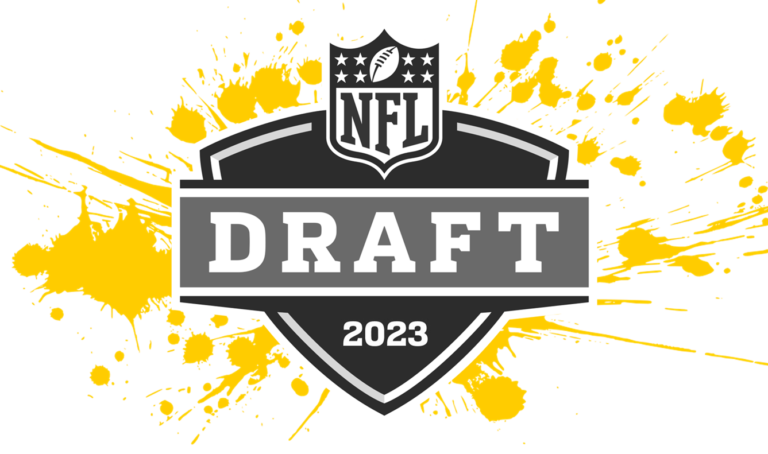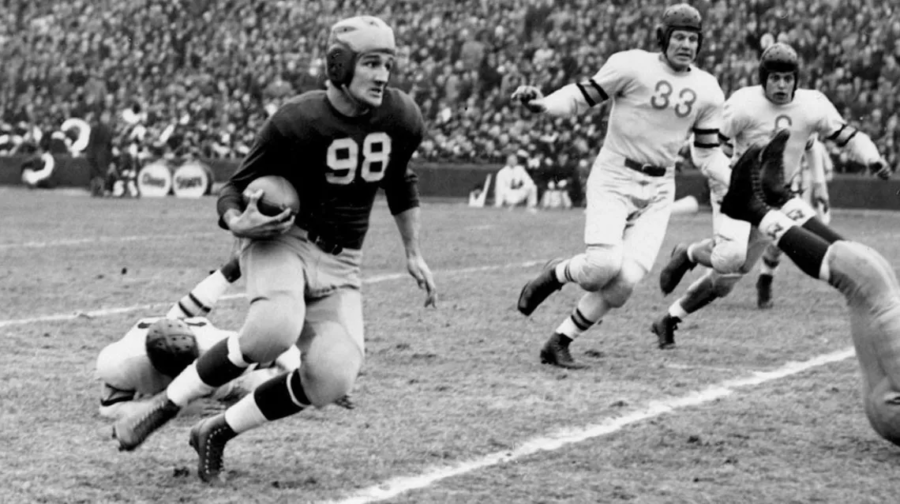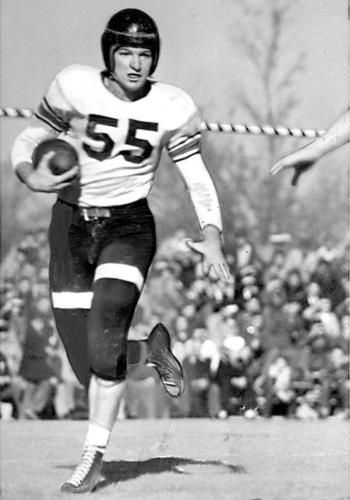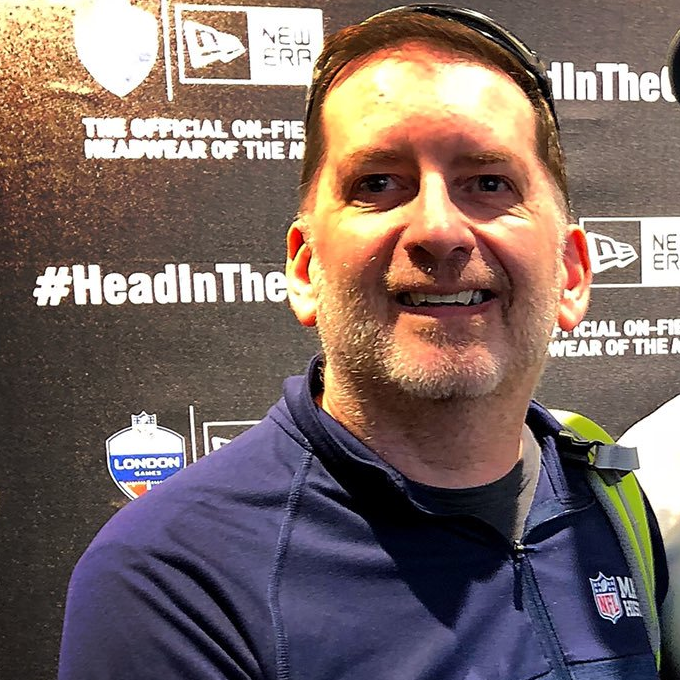NFL DRAFT History Class
By George Somerville
Around this time of year I turn my attention to the NFL Draft. But unlike the vast majority of interested parties, I’m not looking forward – I’m looking back. Why? Because NFL Draft history is not only fascinating, it could also be a guide to what happens in the future!
Which means here we are with another series of History class. So, if y’all are ready, class is in session!

As you might expect there is already much debate about whether the Chicago Bears should trade out of their #1 pick in this year’s draft. And of course this is what makes the period in the run up to the draft just so exciting. The debates, the deliberations, the strategy of using those precious picks for maximum value.
So when I read those Draftniks who so easily trade away that #1 draft pick, it made me wonder just how valuable is this pick to the Bears? So as I have done many times, I dug out the dusty history books to see just how scarce the #1 pick is.
Da Bears
Despite the fact that I love the draft and its lead up, I am no fan of wave after wave of opinions that seek to predict each pick. To me history has proven that draft picks are as much luck as science. Although to be clear – this is not to rubbish or detract from the talented individuals who work tirelessly year round to ensure each pick is made with as much background info as possible.
But with the #1 draft pick comes additional pressure. The weight of an entire fan base sits heavily on the shoulders of GM’s and head coaches. So it is not hyperbole to say that careers live or die on the back of successful – or by contrast disastrous – draft classes.
No pressure on Da Bears!
Which is why the situation that Bears GM Ryan Poles and head coach Matt Eberflus is a heady mix of excitement, fascination and terror.
Why terrifying? Well as it turns out, Chicago is not overly familiar with having the first pick. In fact the Bears have only had the #1 pick twice before in their 104 year history. The last time that the Bears had the premier pick was in 1947. Their first time was a mere six years earlier in 1941. Meaning this is new territory for the current generation of Bears fans.
When Halfbacks Ruled The Game
Today, we are well used to a Quarterback or perhaps an elite edge rusher being selected with the first pack. Indeed the dilemma that the Bears find themselves in this year is born out of the desperation of other teams – or indeed the Bears’ own desperation – to secure their next franchise quarterback.
But back in the early days of the draft, the halfback, or as we now call them, the running back, was the coveted position. The pass heavy, offensive game we have all grown to love was an alien concept back in the 1940’s. This was the period of “run the damn ball” and the halfback was the star player.
How times have changed.
Old 98

It’s no great surprise that the Bears #1 picks in 1941 and in 1947 were both halfbacks.
In 1941 the Bears selected Heisman winner Tom “Old 98” Harmon from Michigan. We are more familiar with the stories of how Eli Manning and John Elway refused to play for the teams that drafted them but Harmon actually started that trend.
Harmon’s career or should I say, life experience after leaving Ann Arbor, Michigan is the kind of story that movies are made out of. Which was exactly what happened to the Heisman star from Michigan.
Despite being drafted #1, Harmon refused to sign for the Bears, stating that he was finished with football. Again, blazing a trail of footballers turned actors, Harmon signed a contract with Columbia pictures where he appeared in a number of movies, including the starring role in Harmon of Michigan – a story about himself.
His film career was relatively short and Harmon returned to football to play the last four games of the 1941 season for the New York Americans of the American Football League.
By 1941 the USA was entwined in World War II and Harmon was drafted in an entirely different way – enlisted into the US Airforce where he trained to be a pilot.
Harmon’s hugely interesting life story continued through his military career where he was shot down twice while in action, the second time over China where he was rescued by guerrillas. As well as being a Heisman winner, Harmon was also awarded the Purple Heart for his military action.
Football wasn’t far away from Harmon’s life and after a flirtation with a career as a broadcaster, Harmon signed for the Los Angeles Rams in 1946.
By this time, Harmon’s heroic lifestyle had caught up with him and the physical demands of playing at halfback meant he was no longer contributing as much to the team as he hoped.
However in a game that Chicago fans must have found incredibly ironic, Harmon set the then NFL record of longest play in NFL history when he ran for 84 yards on a single carry for the Rams against the Bears.
What could have been for the Chicago Bears.
Harmon’s association with football continued into his broadcasting career after he retired from football. In the 1970’s Harmon was the play by play announcer for the UCLA Bruins and for the LA Raiders.
The Blonde Bomber

I assume, hoping for better luck than in 1941, the Bears again selected a halfback with the first pick in the 1947 draft.
Bob Fenimore was an outstanding ball carrier for Oklahoma A&M, leading the nation in rushing yards in two of the three years that he played in Stillwater. Oklahoma A&M would of course go on to become Oklahoma State University.
In his final year at University, Fenimore led the nation in rushing yards and finished 3rd in that year’s Heisman voting. Fenimore was a speed merchant and recorded a 100 yard dash time which was only 0.3 seconds outside the world record time. However, despite breaking records in his final year in Stillwater, Fenimore suffered injuries which put his draft status in doubt.
Nonetheless, Chicago gambled on Fenimore and selected him as their first pick.
Sadly the gamble did not pay off for the Bears, with injuries severely impacting Fenimore’s time in Chicago. He played only 10 games in his first and only season at Soldier Field.
Fenimore is still fondly remembered for his college career and in 1972 was inducted into the College Football Hall of Fame – and fifty years later, the Oklahoma State Cowboy’s Ring of Honor in 2022.
Fields or not?
Of course the outcome of two #1 draft picks in the 1940’s should not influence the same pick in 2023. Or should it?
To a large degree this all depends on whether the Bears decide to stay with current QB1 Justin Fields. It seems incredible that the Bears move on from a QB who was a first round draft pick only two years ago. Equally the Bears have a much greater need on the defensive side of the ball, meaning Will Anderson or Jalen Carter (which this week has become a much more complicated pick) is the smart move.
For me the strategy of trading down for more draft capital just brings uncertainty to your draft. The holder of the #1 draft pick is the only team in the NFL who has true certainty of their first round selection.
I am a big fan that if your pick is available, no pick is too high. However the news this week of Jalen Carter’s involvement in the car crash which led to the death of team mate Devin Willock, has added significant doubt to the draft status of Carter.
All of this makes for debate and speculation for the next 6 or 7 weeks. What will the Bears do on April 27th. I have no idea at this point. Do you?

